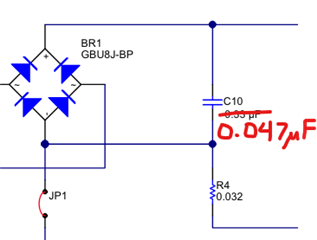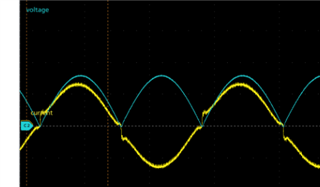Other Parts Discussed in Thread: PMP31164, UCC28180, , UCC256404, UCC2818, UC3854
We have modified the UCC28180EVM similar to PMP31164 reference design except below changes:
1. Boost inductance 0.9mH
2. Frequency 140kHz
3. Current sense resistor 0.1ohms for 100W.
4. Icomp 1000pF, Rseriescomp= 130Kohm, Cseriescomp, = 470pF(Type II compensation)
5. Rvcomp =47Kohm, Cvcomp=4.7uF and Cvcomp,parallel = 47nF.
Previously we have tested we observed more distortion in the waveform
After adding type II current compensation the THD got little better. But still i seeing ac input current is not starting from zero
I dont know why the current waveform is not starting from zero. How do i avoid this? Please help me










